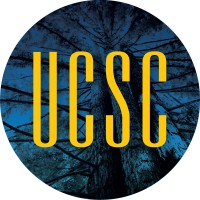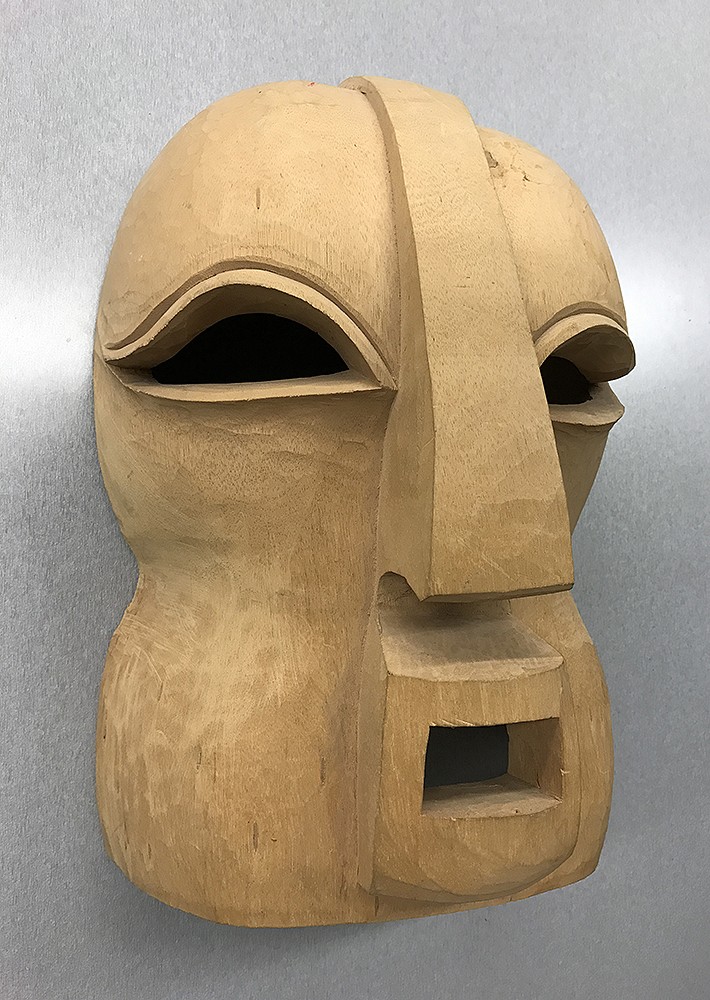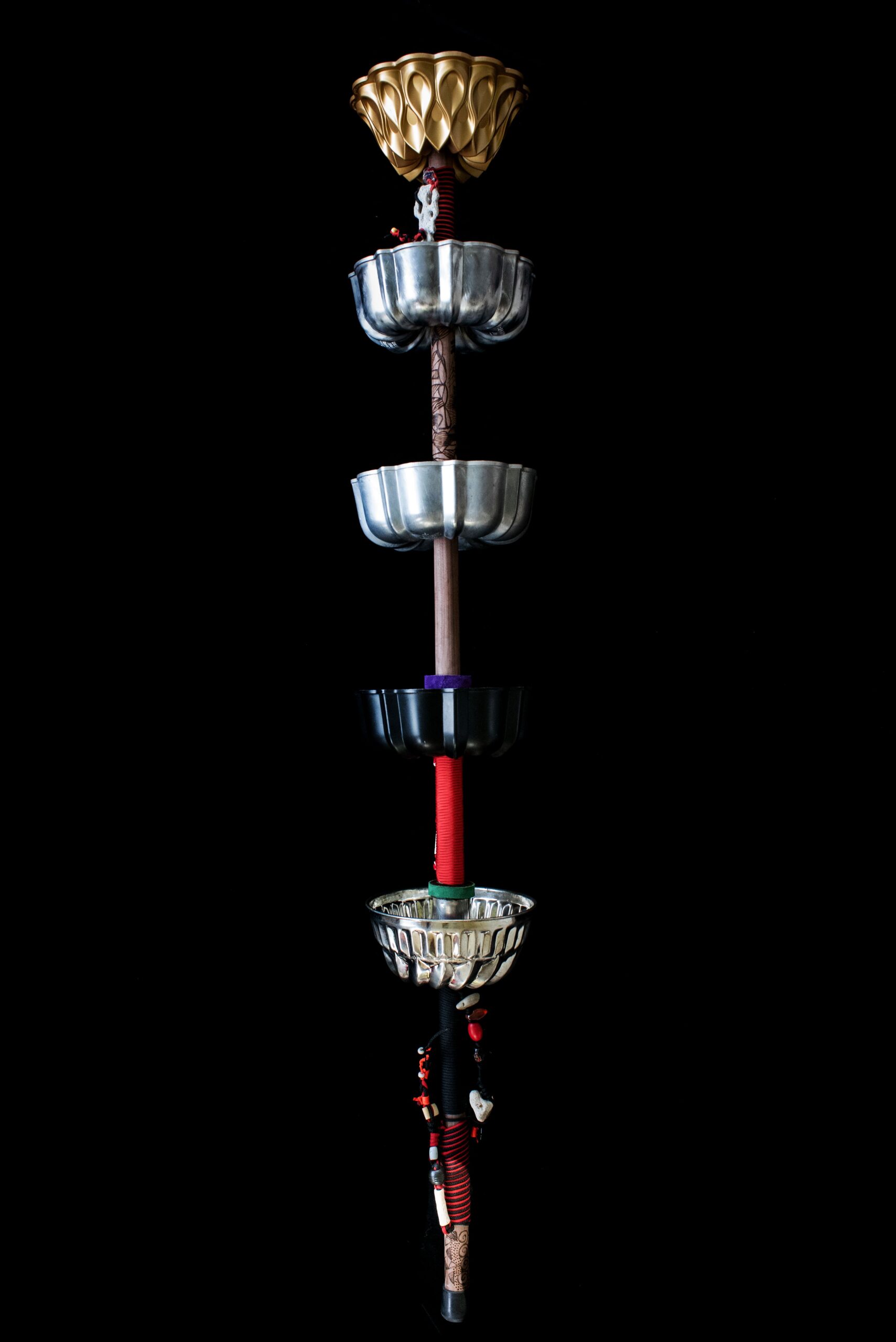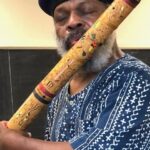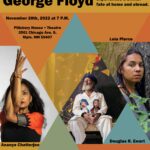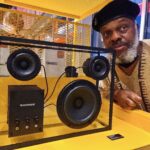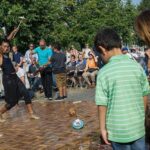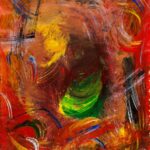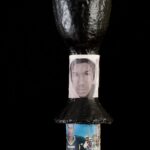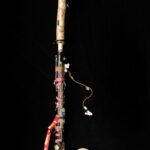Skills
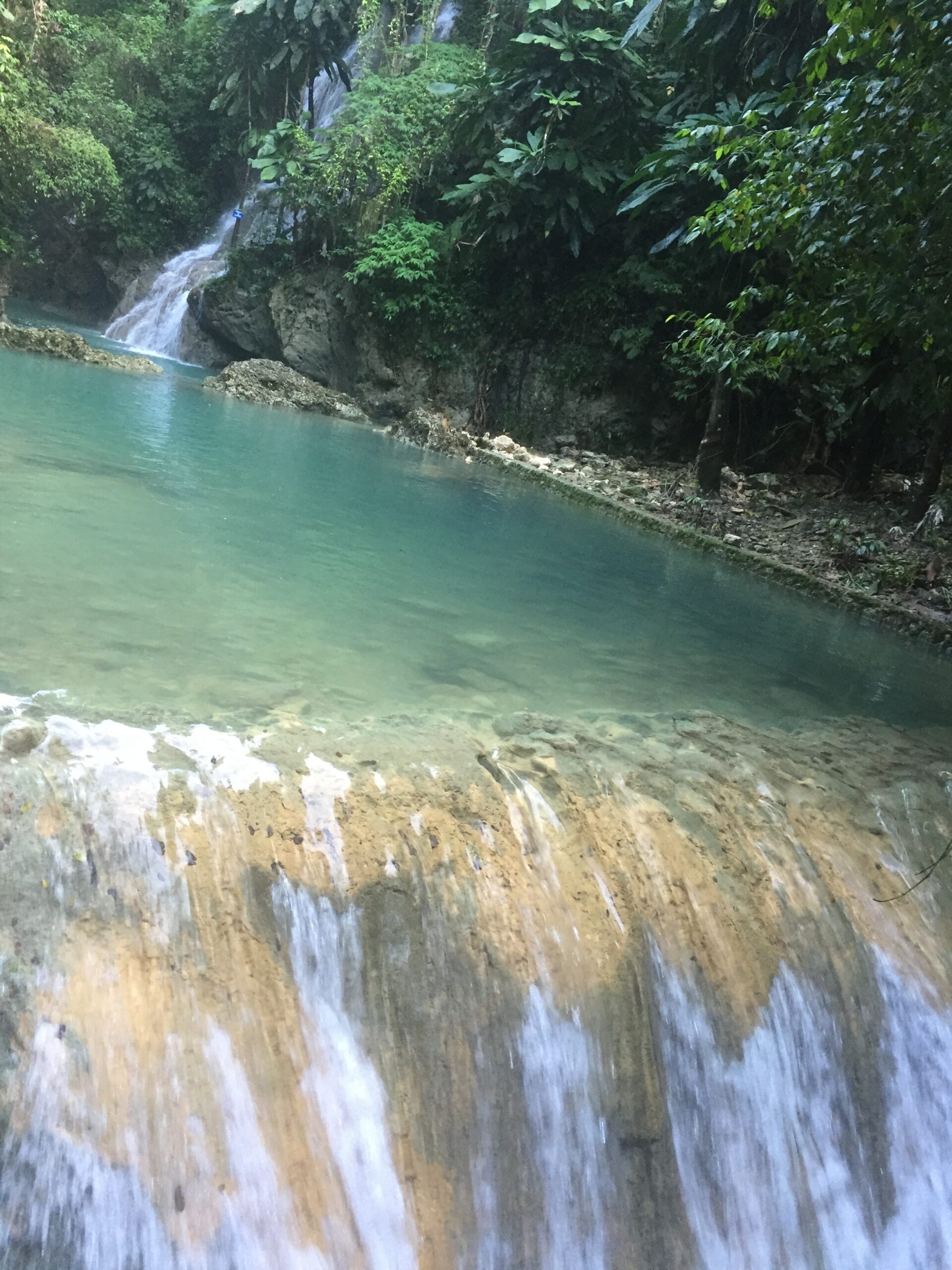
"If you have, you have enough to share."
Grandmother Rebecca Ewart
Video
Crepuscule in Guelph 2016
Crepuscule began in 1993 in Minneapolis, Minnesota as a commissioned work, called “Wondrous Waters,” based on a composition with an enormous group of people performing music, inspired by the sounds, acoustical properties and possibilities that playing on land and water provided. Douglas R. Ewart modified the idea from being just an orchestra with a relatively passive audience into an “orchestra of community and activities,” and an active audience, a microcosm of society where many disciplines could converge. As a visual artist, composer, musician, craftsman, inventor, philosopher, educator and community worker, Ewart recognized the link between art appreciation, self-expression, community expression and success in other areas of life. He himself was guided by his grandmother’s encouragement that "There is room at the top for you if you apply yourself.” Crepuscule extended the idea to the youth, stressing that the arts can open doors to other subjects and pursuits, such as botany, history, social studies, creative writing, mime, martial arts, science, mathematics, etc.
During the summer of 1996, the President of the Bartram Village invited Ewart, Art in Different Places and the Tenants Coalition to work with the children of Philadelphia’s Bartram Village 4H Club to make musical instruments. They would perform on their instruments during an event that brought together a large variety of Philadelphia’s performing groups and individuals to Bartram’s Garden. During the following two summers, Ewart returned to Philadelphia to conduct numerous workshops at three different sites. The festival had become a “constellation of stars” for residents of culturally underserved areas. Crepuscule (pronounced kre’-pu-skewl) provides a space for artists and laypersons/novices of all ages and skill levels to perform all kinds of creative art forms and disciplines, including music, dance, storytelling, karate, Tai Chi, theatre, poetry, and other art forms from many cultures.
Building on the momentum created by the Minneapolis and Philadelphia projects, Crepuscule united more children along with neighborhood adults and professional artists in the city of Chicago. Responding to a lack of activities for youth, economic infrastructure and a lack of venues for public performance, Ewart began collaborating with the Chicago Park District and the Jazz Institute of Chicago in 2000 to offer workshops to participants of after school arts and education programs in Chicago’s Southside. Programs and activities continued to expand and to address community needs, providing greater opportunities for different voices to speak and to sing about their lives in the community in which they lived. Performances included percussion, saxophone, Shakere, Capoeira, Ta’i Chi, children’s theatre, African dance, Aikido, spoken word, murals and maritime skills. Throughout the day, performers and audience participants reflected upon ancient proverbs “One small wind can raise much dust” “I love myself I love the human spirit,” and “We are the present future.” Crepuscule also honored community elders, paying tribute to those who made significant contributions to their families and communities.
